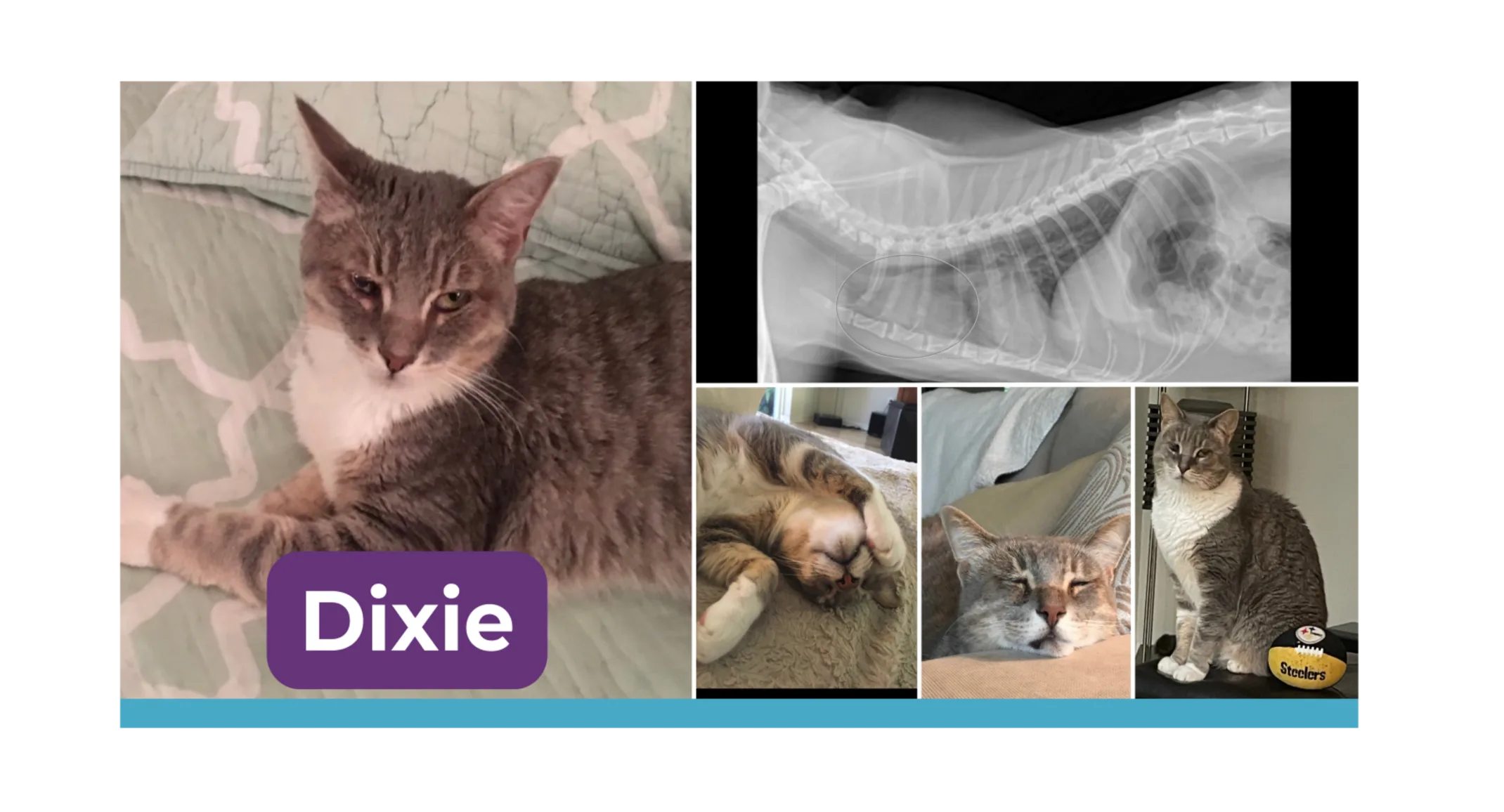Dixie’s Journey: Diagnosing and Treating Myasthenia Gravis in Cats
Case Study

When Dixie, an 8-year-old domestic short-haired cat, began showing signs of weakness, her owners knew something wasn’t right. What started as a suspected orthopedic issue turned out to be a much more complex and rare neurological condition, Myasthenia Gravis (MG).
The First Clues: When Weakness Isn’t Just Lameness
Dixie was first seen at BluePearl Specialty Hospital for what was thought to be a lameness or orthopedic injury. After a thorough exam and clear radiographs, it became evident that her condition wasn’t related to her bones or joints.
She was referred to SCAN (Specialty Center for Animal Neurology) for further investigation. At SCAN, Dixie’s symptoms told a very different story. She walked with a distinctive, low-to-the-ground "poopie-diaper" gait and could only take a few steps before needing to rest. Despite this profound weakness, her reflexes were normal, and she wasn’t in any pain (signs that pointed to a neuromuscular problem).
Uncovering Myasthenia Gravis: A Rare but Treatable Disease
One of the top concerns was Myasthenia Gravis (MG), an autoimmune disease that affects the connection between nerves and muscles. In MG, the body’s immune system mistakenly produces antibodies that block or destroy acetylcholine receptors, essential for muscle contraction.
The gold standard for diagnosing MG is a blood test that detects these specific antibodies. However, an in-clinic neostigmine response test can offer rapid insight. Neostigmine is a medication that temporarily improves the communication between nerves and muscles in MG patients.
Dixie was given a test dose of neostigmine under close supervision. Within minutes, she showed remarkable improvement, walking with much more strength and stability. This immediate response significantly raised our suspicion of MG.
The Hidden Cause: A Thymoma
Thoracic radiographs revealed another critical piece of the puzzle: a mediastinal mass, most likely a thymoma. In cats and dogs, thymomas are one of the most common tumors associated with Myasthenia Gravis because they can trigger the immune system to attack acetylcholine receptors.
Treatment and Next Steps
Dixie was started on oral pyridostigmine, a medication that helps improve muscle strength by enhancing nerve-to-muscle communication. Blood test results later confirmed the presence of the antibodies that cause MG, officially diagnosing her condition.
Dixie is now scheduled to meet with surgeons at BluePearl to discuss the possibility of removing the thymoma. In some cases, surgical removal of the mass can lead to significant improvement, or even complete remission, of Myasthenia Gravis.
What Can We Learn from Dixie’s Story?
Dixie’s case is a great example of how a multi-disciplinary approach (involving internal medicine, neurology, radiology, and surgery) can be essential for diagnosing and managing complex conditions.
While Myasthenia Gravis is rare in cats, it is treatable. Prompt diagnosis and the right combination of medications, and sometimes surgery, can make a tremendous difference in quality of life.
If you notice your pet experiencing unusual weakness, tiring quickly after activity, or developing changes in gait, don’t hesitate to contact your veterinarian. Early intervention can be life-changing.
